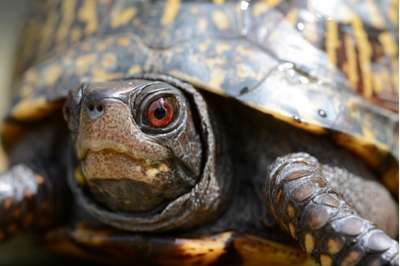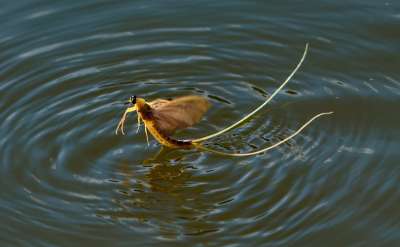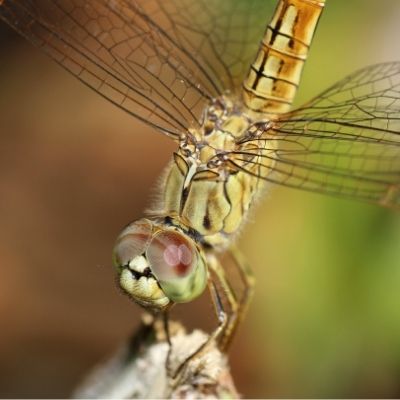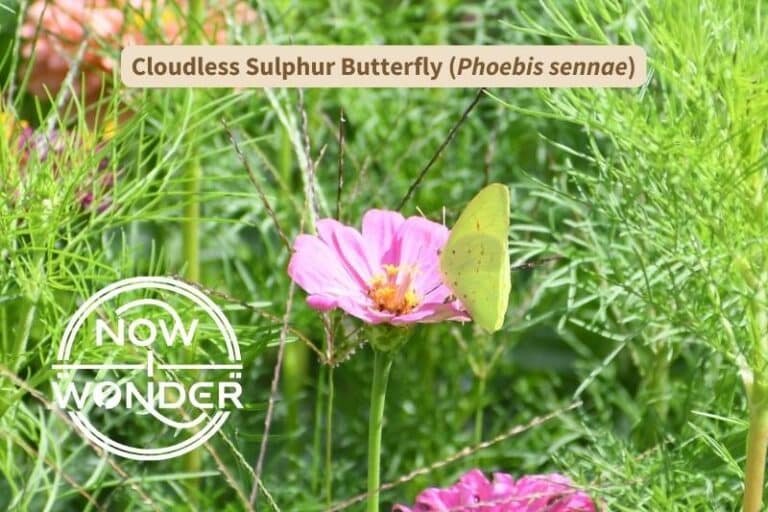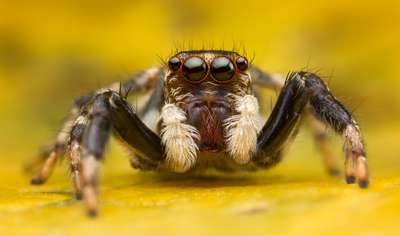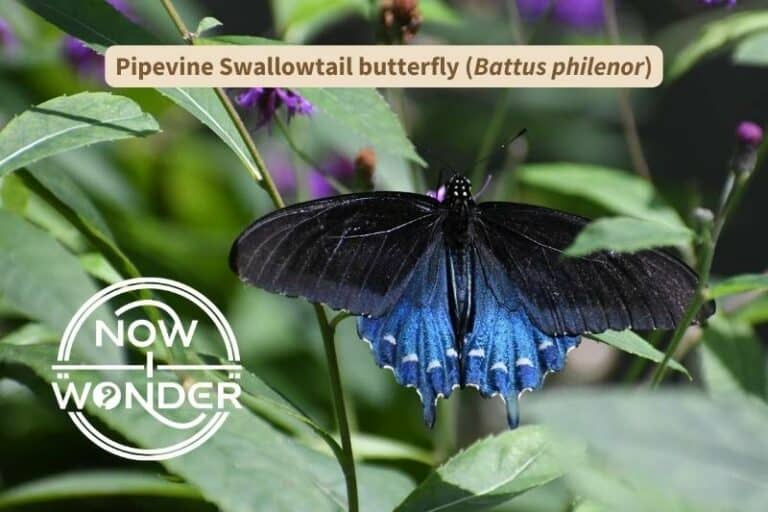The small, bright green lizards often seen in the southeastern United States are green anoles (Anolis carolinensis). Sometimes referred to incorrectly as “chameleons” due to their color-changing abilities, they are classified in Class Reptilia, Order Squamata, Family Iguanidae.
Lizards belong to the most diverse group of reptiles and examples can be found almost everywhere. Green anoles (Anolis carolinensis) are common – and very interesting – lizards found throughout the southeastern United States.
Read on to learn more about what these creatures are and how they live.
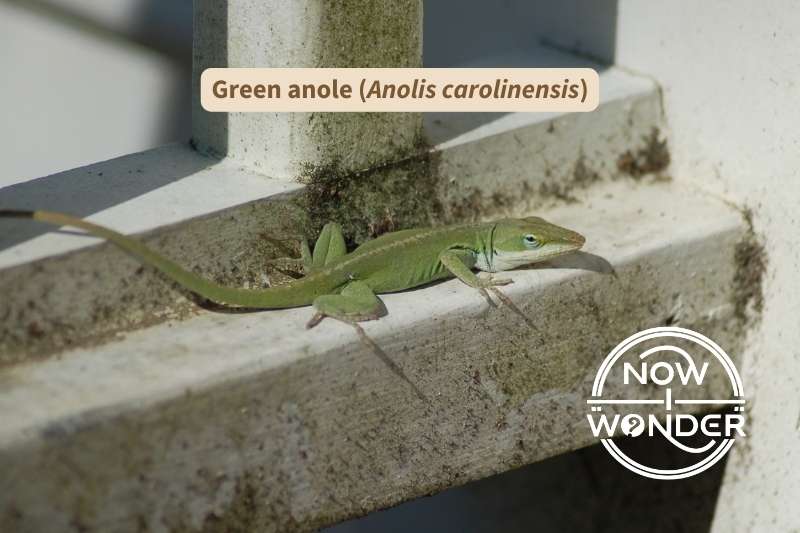
Where do green anole lizards live?
Green anoles (Anolis carolinensis) live throughout the southeastern United States, from North Carolina west to mid-Texas and all points south. They live in and near trees and are active during the day. Adults prefer to perch in the shade; juveniles prefer sunny spots closer to the ground.
Male anole lizards establish and defend territories that are approximately 70 cubic meters and each male’s territory may encompass the home ranges of several females (Jenssen, 2006).
Female lizards establish smaller home ranges of about 8 cubic meters which can overlap. Females will defend their territories against other females but unlike male territoriality, female defensiveness is less about ensuring the right to reproduce and more about guarding resources like food sources and shelter (Jenssen, 2006).
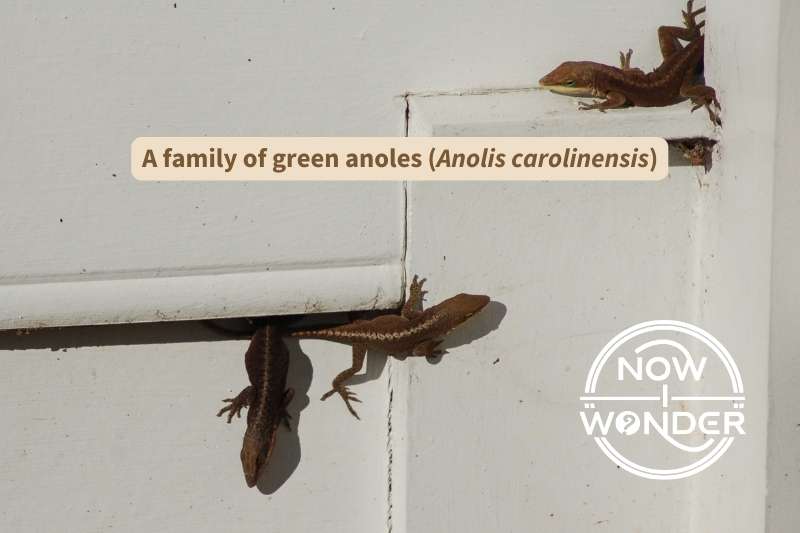
What do green anole lizards look like?
Green anoles (Anolis carolinensis) are long, slender lizards, with wedge-shaped heads, toothed jaws, four legs with five-clawed, padded toes and long, slender tails. Both sexes can be either bright green or muted brown. Ranging from 5 – 8 inches long (12.7 – 20.3 cm), males are larger than females.
Green anole lizards have external ear openings on the sides of their heads and movable eyelids, which allows them to blink. They have pads on their toes that help them climb and can change color in response to changes in light, temperature, stress levels and hormone changes. Their tails are thin and longer than their bodies.
Anoles are usually brown when they are relaxed, basking, or in cool, damp, or dark environments (Martof 1980). They turn bright green during mating season, which is between the months of March and September in the southeastern United States.
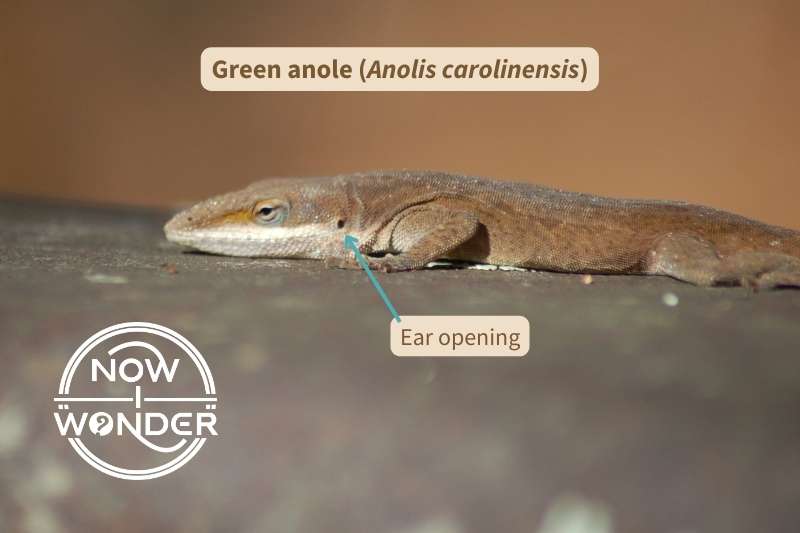
How can I find green anole lizards?
Green anoles are most likely to be found off ground level in trees and bushes. Their green or brown coloration makes them inconspicuous when surrounded by vegetation, as does their tendency to remain still unless disturbed. But they often bask on sunny vertical surfaces and become easier to spot.
To locate green anole lizards in the wild, look closely at bushes and tree trunks near active insect life. Anoles also spend much of their time perched in different locations through their territories.
Good perches have several characteristics.
First, it should have good visibility. Anole lizards communicate with each other through a variety of visual signals that require them to see each other to be effective. For more information about how anoles communicate with each other – and what they say when they do – check out the post “Everyday lives of Green Anoles”.
Second, a good perch will be close to some kind of protected space, such as between exposed roots or thick bunches of leaves. Being out in the open is dangerous; the same visibility that allows it to advertise territorial ownership or readiness to mate also exposes it to lurking predators.
Anoles rely on their sharp eyesight to spot predators in time to flee to safety and the shorter the distance to safety, the more likely they are to reach it in time.
Third, a perch should allow easy access to both sun and shade. Anoles are lizards and thus ectothermic; their body temperature is impacted by air temperature. They regulate their body temperature through various behaviors like basking in the sun to warm up or moving into the shadows to cool down.
Age and size impacts the perches that individual anoles are able to select. Adult anoles, which are larger than juveniles, are generally found higher up in trees and on trees with thicker trunks.
Juveniles perch closer to the ground and more often out on leafy branches (Mitani et al. 2020). Juveniles are not yet big enough to challenge the larger adults for the most advantageous perching sites and they may be attacked by the adult males if they venture too far into the males’ territory.
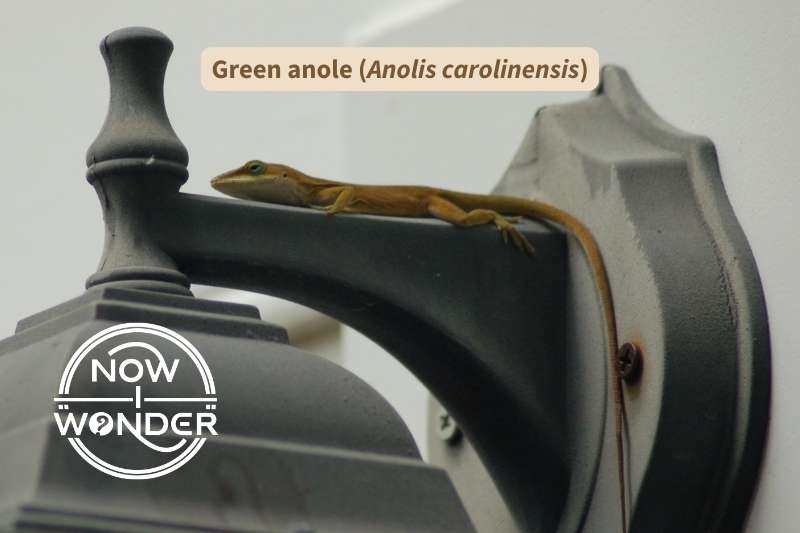
What do green anole lizards eat?
Green anoles eat insects like flies, beetles, moths, and other invertebrates like spiders. They either position themselves in spots where prey is likely to wander within reach or they slowly hunt through the branches and leaves until they find prey.
What eats green anole lizards?
Snakes and birds are the major predators of green anoles. Rat snakes (Elaphe obsoleta), corn snakes (Elaphe guttata) and black racers (Coluber constrictor) eat anole eggs. Birds such as yellow-throated and red-throated vireos (Vireo flavifrons, V. olivaceus) eat adults (Sykes 2007).
Do green anole lizards lay eggs?
Female green anoles (Anolis carolinensis) lay single eggs in leaf litter and rock piles every 14 days through the mating season of April to September. Incubation takes approximately 5 weeks. Females provide no direct care to the eggs or hatchlings.
Unlike other reptile species that lay clutches of several eggs at once, green anoles lay only one egg at a time. Female green anoles have two ovaries but only one follicle develops at a time; the ovaries take turns producing eggs (Martof 1980). A female has to be courted by a male in order to ovulate; her ovarian development is triggered by the sight of a displaying male (Martof 1980).
Can green anole lizards re-grow their tails?
Green anoles can re-grow their tails after loss but the replacement tail looks different from – and is not as strong or functional – as the original. Their tails have special fracture points that let them break off without causing mortal injury. Replacement tails grow in about a month.
The ability of an organism to break off a body part is called “autotomy” and is a survival strategy in anoles. The muscles within the tail continue to move after amputation. A single predator can’t chase more than one prey item at a time so the sudden splitting of a single anole into two separate, moving pieces can sometimes distract an attacker long enough for the anole to escape with its life.
Original tails contain vertebrae and are fully functional but replacement tails are supported only by a rod of cartilage which is neither as strong or as flexible as the original. Anole tails play an important part in their survival and sacrificing them can have serious long term consequences.
For an in-depth look about tail autotomy in lizards, check out our post “What are skinks?” which covers how this survival strategy works for the green anole’s lizard cousin, the five-lined skink (Plestiodon fasciatus).
What other lizards can be mistaken for green anoles?
Cuban green anoles (Anolis porcatus) and brown anoles (Anolis sagrei) are two species easily mistaken for green anoles (Anolis carolinensis). Anolis porcatus is almost indistinguishable from a green-phase green anole and Anolis sagrei resembles a brown-phase green anole, only with stripes.
Both of these species have smaller distributions than the green anole. The Cuban green anole is native to the island of Cuba but was introduced to south Florida. The brown anole is found in very small areas on the east and west coast of the Florida peninsula. Both species now compete for food and habitat with the green anoles native to these areas.
Related Now I Wonder Posts
To learn more about lizards, check out these other Now I Wonder posts:
For more information about snails and slugs that some lizards prey upon, check out these other Now I Wonder posts:
- What are slugs?
- What do slugs eat?
- What is the large spotted slug called?
- What is the difference between slugs and snails?
Bibliography
Martof B, Palmer W, Bailey J, Harrison III J. 1980. Amphibians and reptiles of the Carolinas and Virginia. Chapel Hill (NC); University of North Carolina University Press.
Mitani N, Kishimoto T, Sugo N, Odaohara F, Ito Y. 2020. Tree species preference of the green anole (anolis carolinensis) and perch selection. Current Herpetology. 39(2):137-46. [Internet] [cited 2022 June 26] Available at: https://www.jstage.jst.go.jp/article/hsj/39/2/39_137/_article/-char/ja/. DOI: https://doi.org/10.5358/hsj.39.137
Sykes Jr, Atherton LS, Payne RL. 2007. Yellow-throated and red-eyed vireos foraging on green anoles during migration: A journal of ornithology. The Wilson Journal of Ornithology. 119(3): 508-10. [Internet] [cited 2022 June 17] Available at: https://doi.org/10.1676/06-163.1

